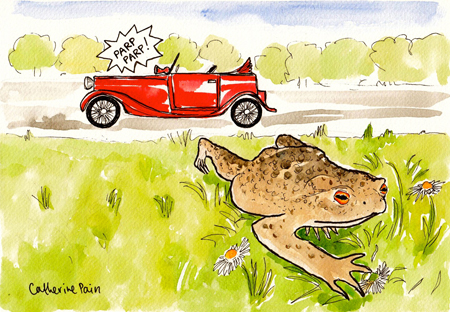
If, like me, this fine summer, you have been driving around our country roads and lanes you may have noticed an apparent increase in the number of dead animals, especially badgers, rabbits, and pheasants.
Since the Government’s aborted cull of badgers in the West country in a failed attempt to curb the spread of bovine Tuberculosis, I have begun to observe the carnage we see daily on our highways and byways. Roadkill is back, and with a vengeance.
The internal combustion engine must kill tens of thousands of animals each year. As vehicular ownership rises, more and more of our native animal species seem vulnerable to the hit and run motorist. Badgers account for over one quarter of all our roadkill, according to research conducted by Cardiff University.
My unscientific observations are supported by their research, appropriately called Project Splatter. Last year they produced a hit list of roadkill in Britain, and discovered there were not only definite patterns among species, but hot spots of where deaths happened.
In one five-month period from February to June 2013, 1,322 fatalities were scraped off the tarmac. A total of 46 species of birds, mammals, and amphibians were reported killed, including otters, mink and coot. In total 314 of the 1,322 dead were badgers, 208 pheasants, 153 foxes, 137 rabbits, 56 hedgehogs, and 30 owls.
If you are driving in West Sussex: beware! Sussex is the county with the highest roadkill numbers.
Driving back along the A286 following this summer’s Glorious Goodwood, I began to count the badgers splattered all over the tarmac. I gave up at 15 in one three-mile stretch of road. I should not have been surprised: Sussex casualty rate is three times the rate of second placed Avon. Badgers are especially vulnerable in Sussex. And up north, in Cumbria, if you are a pheasant, be very, very wary: 48 per cent of reported roadkill in Cumbria were pheasants
Our motorways too are increasingly seeing rising roadkill deaths. The M5 from the Midlands to the West country is especially bad, and exacts the highest toll, accounting for more deaths than all the other motorways combined.
We are sometimes warned by highway signs when we are entering an area where cattle cross the road, or where wild deer may be roaming. Surely it would be a good idea to erect similar signs for other smaller and far more vulnerable animals.
I am pleased to report The Open University at Walton Hall in Buckinghamshire is doing its bit to save wildlife from motorised vehicles. Surely more counties should take actions.
Near the old Walton Church on the University campus there is an ancient pond by the inner ring road. The University Estates Department have installed signs warning drivers to take extra care because of a single moorhen chick which is prone to taking an occasional suicidal dash.
I do hope it is not as bad as badgers at crossing the road.
This blog post is part of Society Matters. The blog seeks to inform, stimulate and challenge our understanding of this changing world and of our humbling role within it.
Want to know more about studying social sciences at The Open University? Visit the Social Sciences faculty site.
Please note: The opinions expressed in Society Matters posts are those of the individual authors, and do not represent the views of The Open University.
Rate and Review
Rate this activity
Review this activity
Log into OpenLearn to leave reviews and join in the conversation.
Activity reviews